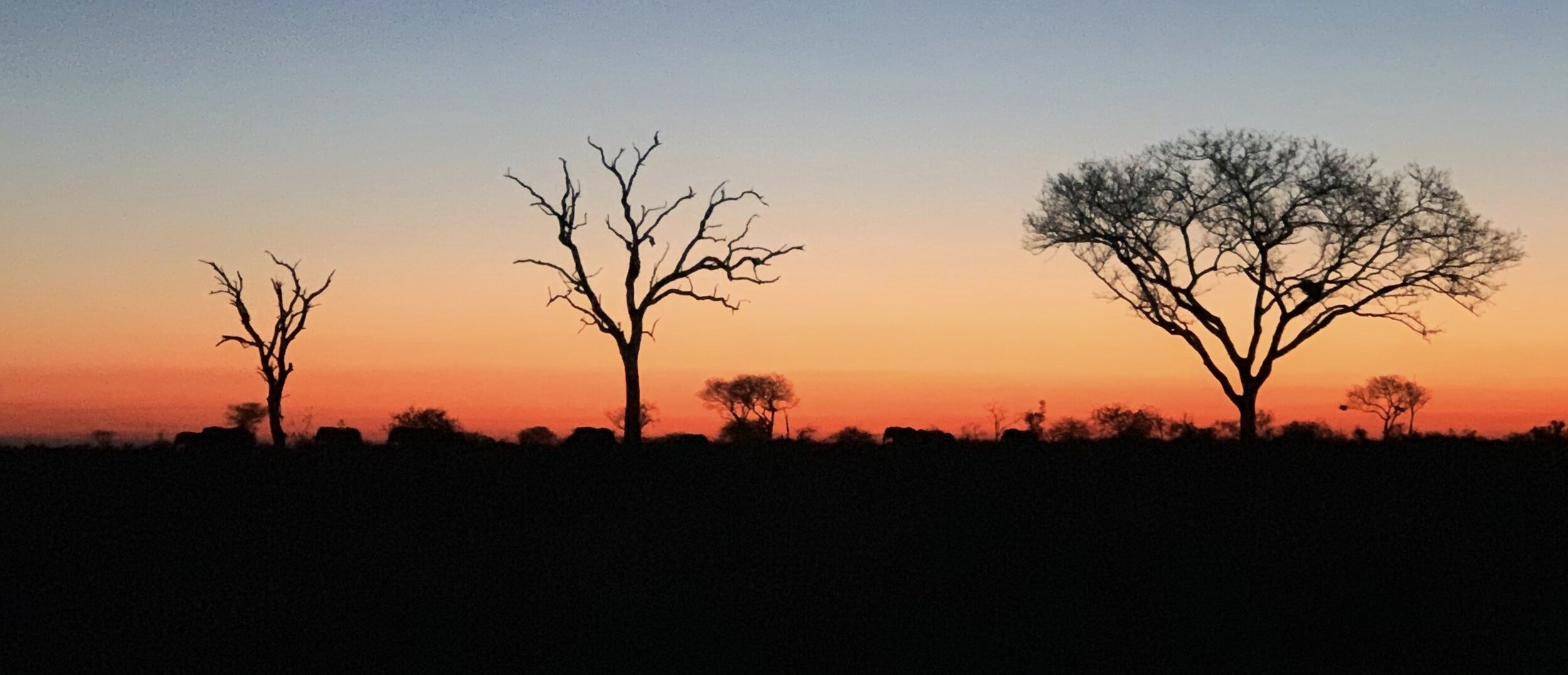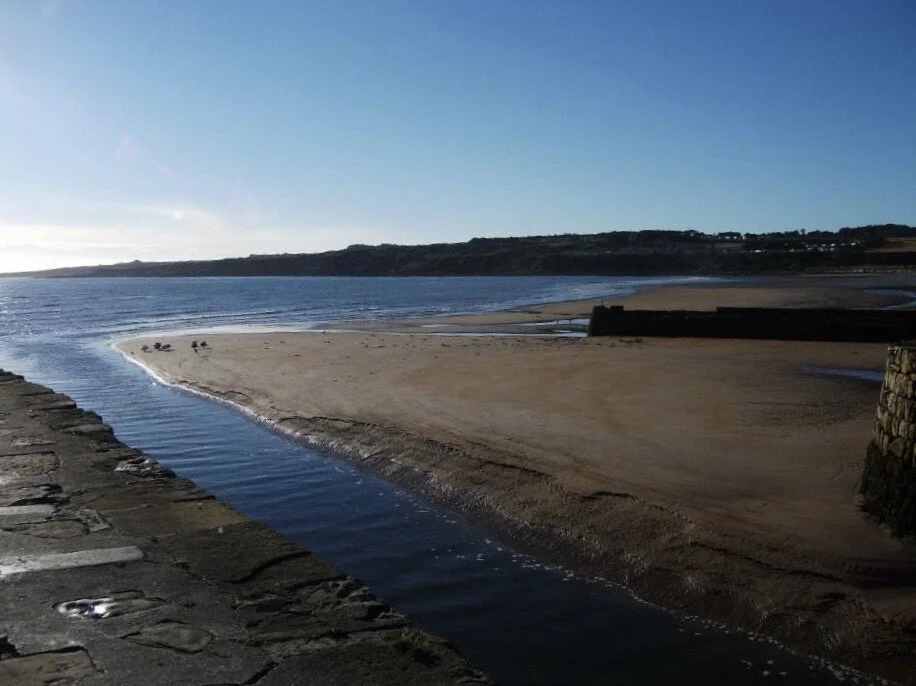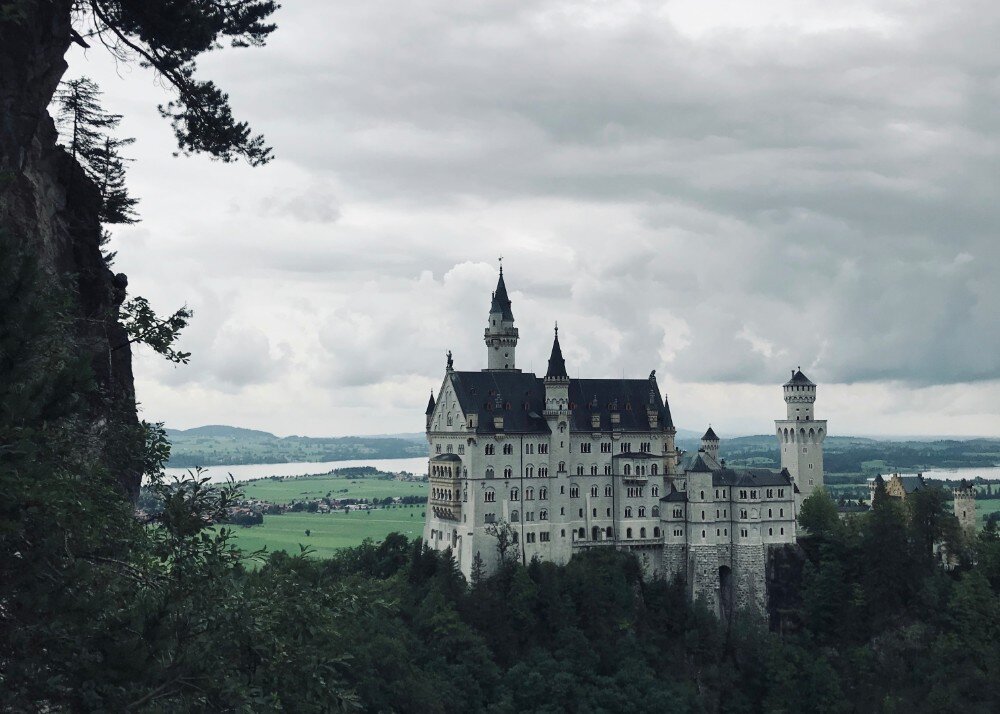By Emily Oldfield:
My relationship with the dawn. For a long time I have sought the quiet spaces, the unannounced areas, the moments ripe with the tension of possibility. That is the dawn, to me – a place uneasy with potential, strange and malleable edges, inviting experimentation before the day declares itself… and the usual routines and cycles with it.
I have risen early for as long as I can remember, at least always early enough to still catch the last imprint of dawn like thumbmarks on the morning. But to be in dawn itself is a place altogether; perhaps the inevitable edgeland, twisted in its temporality - a map of furrowed brows in restless beds, the taste of dread deep in the palette, the futile attempts to re-enter dreams in the dead hour before the alarm. The time some wish they could sleep forever.
When, aged 18, I lived in St Andrews on the Scottish East coast, I would enter dawn each morning with two trainer-strapped feet, an oversized hoodie and leggings. 18: the same number of degrees the sun is below the horizon at astronomical dawn. At 5.30am, the sea was a sensation, not yet separate from the sky, the air stirred thick with the sting of salt. Light diffused as a kind of colour seepage against the thick black bulk of the sky, the tide all the time turning its rhythms like endless wands of chalk worked down a blackboard. Shhht, shhht, shhht.
I set myself to that rhythm – the surge of the sea and my own ticking compulsion to push… push onwards, beyond. The cold flex of the air flashed through my lungs as I lurched out of Albany Park – the pebble-dashed plot of university accommodation in a peculiar crater by East Sands – and along the shorefront. The blanket of blackness was a comfort, billowing at its edges into a yellowing, almost coppery bruise as the first spools of sunlight fought through. This marked nautical dawn. Here the sun sits at 12 degrees below the horizon, melting like a layer between land and water…and two different bodies are born.
It is an addictive feeling, running at the edges. Dawn on one side, my own body at the other; underfed and overstretched, burning at the chords of muscle like a candle wick collapsing into itself, light leaching out into the battered bronze of a new day.
Within five minutes of the run I would come to East Sands harbour, making a note to hold my balance across the wooden footbridge, its slats alternately swollen and withered through the warp of the water, like teeth time-swilled with soda. The stench of gutted fish and engine oil.
I ran very much as routine and each morning the view would typically be the same on reaching the harbour. On the end of a block of dwellings closest to the water, three men would be hunched in a paraffin-lamp lit garage, looking out to sea… to the red smears settling on water, lights of caution, of warning. Bearded and booted, they regarded my bluster past them with apparent contempt at first, which settled uneasily into a kind of acknowledgement. Outside the garage, various blue-edged ropes spooled across stone like cut-off, dried-out plaits… the hair of some washed-up marine creature, now hard and lashed under salt crust.
Approaching civil dawn – the time when most objects start to become clear, the sun at just 6 degrees below the horizon - sometimes I would have to dodge the lobster pots, their pink-orange cages and little hinged doors turning them into a sparkling series of grottoes. Seaweed was scattered everywhere in its ragged carpeting, pustules of black and grey-green bladderwrack leaking into standing water. The occasional galled cry of a gull would puncture the air.
I enjoyed the unspoken intimacy of seeing the fishermen each morning, the suspended questions of our occupation, assumptions hanging between us, but also a kind of confirmation; you proceed with your task, I proceed with mine. Rather than uncertainty, it fused a kind of communion - solid and salt webbed and somehow reassuring. I would pass them and then make my way up the side of the ruined cathedral, suspended high on the coast edge like a shell on a spit. The pathway would be peppered with the petroleum-sheen of standing lighting, the cathedral itself once one of the largest buildings in Scotland – consecrated in 1318. Another 18. There was the cartilage of the gable walls and a section of South Transept, the bulk and body of the place flayed away over time into sea foam. It was ransacked in 1559, abandoned by 1561.
The rasp and slap of the sea simmered to kind of snore as I stumbled up steps, ran past the cathedral and angled towards the town of St Andrews itself, starting at the bottom end of Market Street, the cut of the cobbles blunt on the bottom of my feet.
I ran over West Sands, past the many-starred hotel by the golf links where I worked a couple of shifts as a waitress. Strangers gazes grasping at my ill-fitting uniform, my movements clumsy and awkward. Men with their flourishing gestures and uninvited hands, the view polished and mowed, even the beach opening up in an extended flank of white sand. I staggered with a tray of gourmet desserts… and ran from that.
I ran to the public swimming baths for a hurried shower when the shared one broke. I ran into other students, their faces closed. I ran even when a childhood friend visited in the middle of winter. After seven hours on an overcrowded coach from Accrington, she shared my single bed whilst we watched Trainspotting on the smeared screen of an old laptop, the type that permanently needs to charge. I felt a little like that as I ran, leaving my friend in bed, picking up friction from the street in a kind of necessary energy. Repeated.
I ran when the Northern Lights swirled through the sky, a mottled green like that of buds pulsing on the edge of blossom, plucky against the dark.
When people refer to running and places – it is typically in terms of the trajectory of a beginning and end, a start and destination, to and from. For me, running became an attempt of touch; to push myself, not only forwards, but into. The thickening thud of foot through stones, then sand, then surf. I craved to feel the absolution of everything, the timelessness of land-lock.
I was even preparing my body for it, skimming down to the quick, coaxing the bone’s proximity to skin - and then to surrounds. A closeness created through how strongly limbs felt every lurch and lift, the wind chiselling cheeks and shoulders. As the weather grew colder, I pushed – in childhood shorts and a t-shirt – to take higher and higher routes. This, after all, seemed a place of straight lines, people knew their allegiances: onwards. I could feel my legs filing down precise points, the compass needle caught in the mind’s eye and fixed on N. Nada. Nothing. None.
Running was a place during those months, just as the dawn was - their combined woozy mixture of experimentation, intimacy, release. In lectures, my legs fizzed with friction, my tailbone scoring against the skin of my lower back until it bled beneath carefully-chosen clothes. I felt everything all over.
It was all over as I aimed for one of the rockiest routes along the east coast path, a tide-bolstered breeze buffeting my knees, dawn still dappling the pelt of the sky approaching 6.30am. It was January and spangles of orange-edged sunlight were starting to cast themselves outwards, catching gorse on one side, sheer cliffs on the other.
Brown fur suddenly stood out against gritty, salt-studded textures. Stretched a little ahead on the rock-scrambled pathway was a young rabbit, laid on its side, back legs coiled like a comma, twitching. Coming closer, its eyes were swollen bulbous in its head like two live insects glistening, fizzing beneath partially open lids. An amber matter pooled beneath, sticky and strange.
Myxomatosis; the words wondrous and warped on my tongue as I took in the moment, my face then turning back towards the direction of the town in a kind of helplessness. Dawn-darkness still pervading, but so too the dashes of light, the red pinpoints of potential warning – or reassurance – an assemblage at the end of docks, at the tops of buildings. A reminder; here. My tears smeared the light into a lingering red gleam, the gleam of something else against the skyline.
Red lights remind us of our capacity to go too far. How we struggle to face up to the land beneath … and yet need to.
It is now five years since those dawn runs in St Andrews, and I have written this, the words somehow leeching out during the Covid-19 lockdown, lines unfolding in a room of a shared house in Hulme. Inner city Manchester stirs.
Here I sit and stare out of the window, facing the news that I need to stop running again, the old ghost at the edge of my mind with its grey fingers. The buildings burr with construction, expansion, bulk.
And at the tops of the cranes there are red lights.
***
Emily Oldfield is a writer especially drawn to exploring landscape, the feel of place and relationships to it within her work. She is the Editor of Haunt Manchester at Manchester Metropolitan University, explored Winter Hill for the Edgelandia project, and now is probably wandering somewhere in the South Pennines. Grit is her first poetry pamphlet - published by Poetry Salzburg (March 2020) - delving into histories of the Rossendale Valley and The River Irwell, which has continued its thread throughout her life.













